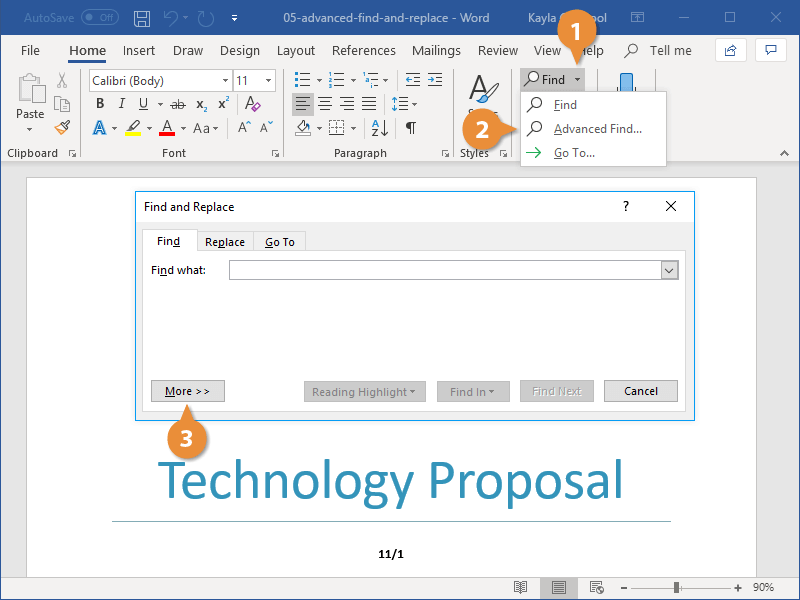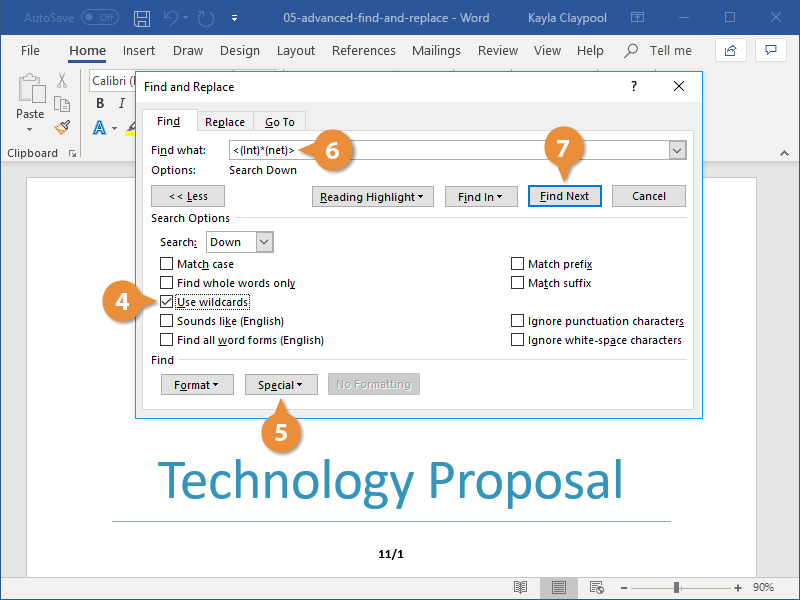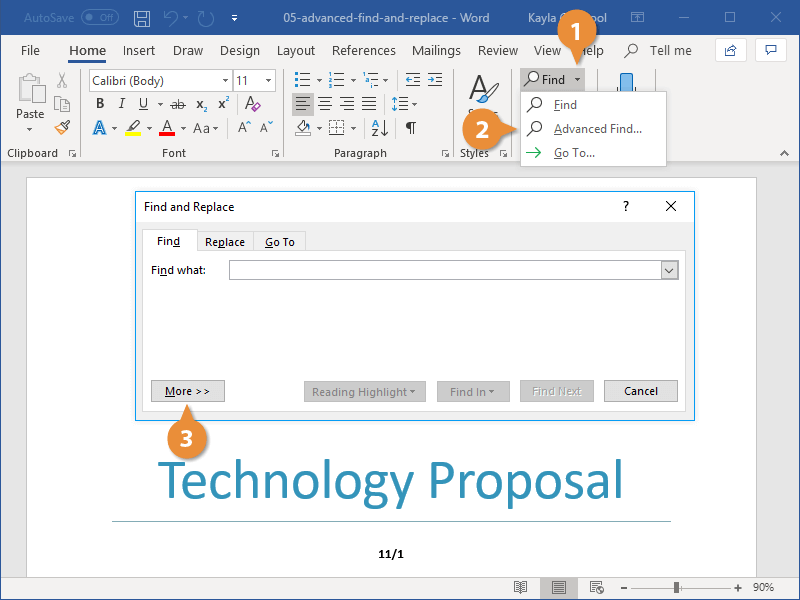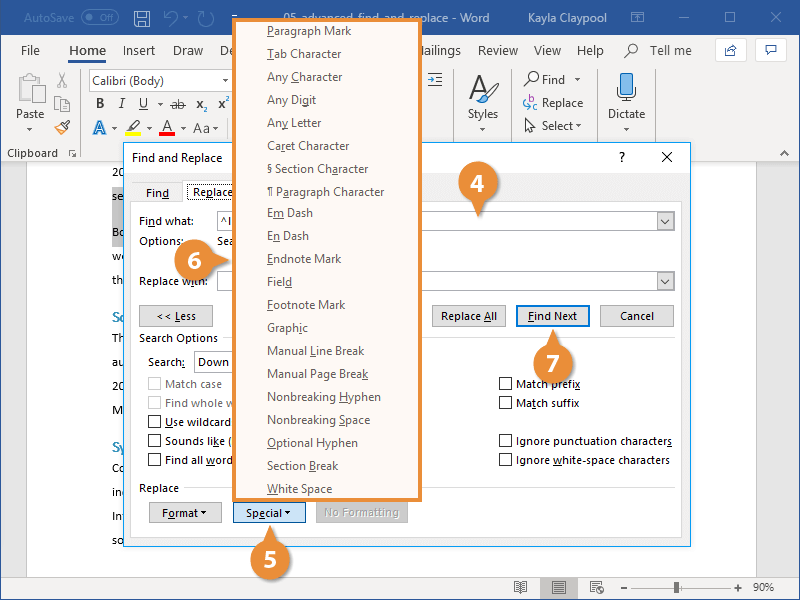In addition to simply searching for a specified word or phrase, you can use Word's advanced search features to search using wildcards or search for special characters.
A “wildcard” is a character (or a short string of characters) that represents multiple characters in a search.
- Click the Find list arrow.
- Select Advanced Find.
- Click the More button.
- Click the Use wildcards check box.
If you're familiar with wildcards, you can type them out as part of the search phrase. You can also insert them from a menu.
- (Optional) Click the Special menu to select a wildcard.
The wildcard syntax is shown at the top of the list. The syntax can get tricky, and wildcards can be tough to understand without examples. The table on the next page should help explain some common examples.
- Enter a search phrase in the Find what text field.
- Click Find Next.
The search is conducted. Make sure to be careful if you're using wildcard searches to find and replace text. Keep an eye on the results in case something unexpected is found.
Some common wildcards are shown in the following table.
| Wildcard |
Purpose |
Example |
| ? |
Any single character |
h?t will find hat, hot, and h t |
| * |
Any number of characters |
a*d will find ad, ahead, and as compared |
| [ ] |
One of these characters |
t[ai]n will find tan and tin, but not ton |
| [ - ] |
One of these characters in a range |
[b-d]ot will find bot, cot, and dot |
| [! ] |
Not the specific characters |
[!d]ust will find rust and must, but not dust |
| < |
The beginning of a word |
<(some) will find something, someone, and somewhere |
| > |
The end of a word |
(one)> will find stone, cone, and provolone |
| @ |
One or more instances of a character |
cor@al will find coral and corral |
| {n} |
Exactly n instances of a character |
^p{2} will find two consecutive paragraph breaks |
| {n,} |
At least n instances of a character |
10{2,} will find 100, 1000, and 10000 |
| {n,m} |
Between n and m instances of a character |
10{2,3} will find only 100 and 1000, not 10000 |
You can also specifically search for special characters, such as line and page breaks, paragraph marks, fields, graphics, and dashes.
- Click the Find list arrow.
- Select Advanced Find.
- Click the More button to expand the dialog box, if necessary.
If you’ve expanded the Find and Replace dialog box in a recent search, without collapsing it back down, it will open in an expanded state.
- Click in the Find what text field.
- Click the Special button.
The Special menu lists the special formatting characters that can be searched for.
- Select a special character.
When you select a special character from the menu, the text code for that special character is inserted.
- Click the Find Next button.
The next instance of the selected special character is found.
You can find and replace one special character with another (to replace section breaks with page breaks, for example) on the Replace tab of the Find and Replace dialog box.




